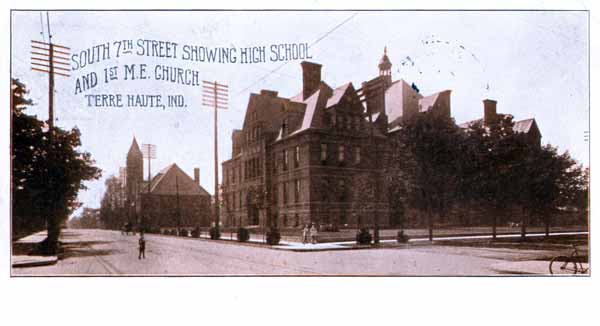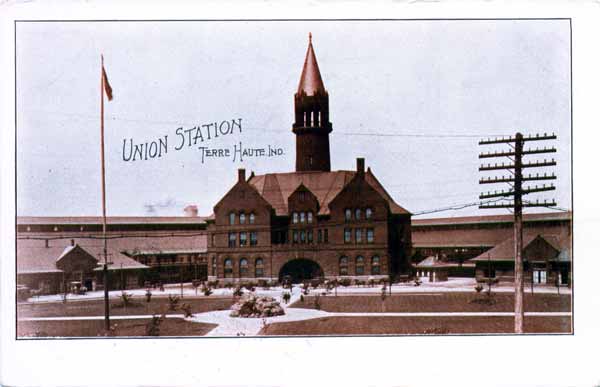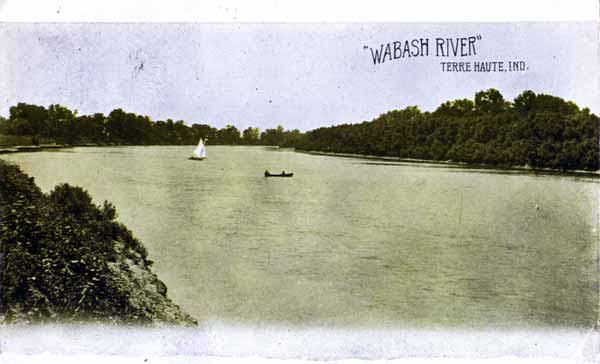
Bundy "Terre Haute, Ind." Set (2)
This set of cards was published by Bundy of Terre Haute. They are post dated between 1905 and 1907.

South Seventh Street showing showing High School and 1st M. E. Church.
This postcard, stamped in Terre Haute on June 8th, 1914, has the printed text...
Pub. by Bundy, Terre Haute Ind.
I have another copy of this postcard that was stamped in Terre Haute on February 28th, 1907.

Union Station
This unused postcard has the printed text...
Pub. by Bundy, Terre Haute, Ind.

Union Station
This unused postcard has the printed text...
Pub. by Bundy, Terre Haute, Ind.

Wabash River, Terre Haute, Indiana
This postcard, posted in Terre Haute sometime in 1907, has the printed text...
Pub by Bundy, Terre Haute, Ind
I have another copy of this postcard that was posted in Terre Haute on July 3rd, 1907.
Others in this set that I know exist but which I do not have a copy of are of Big 4 Station and another view of Union Station.
This page created 21st October 2008, last modified 3rd January 2010